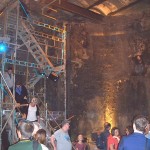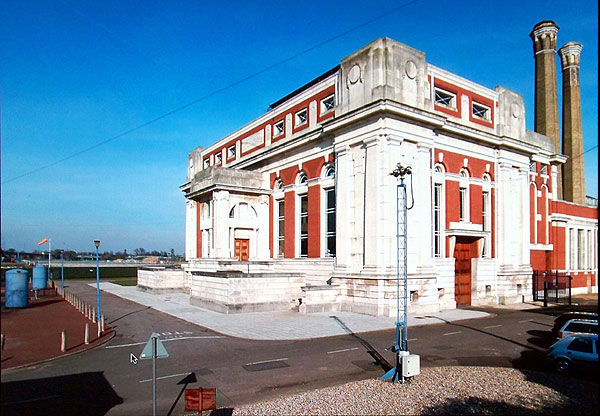
The Kempton triple-expansion engines are situated in Hounslow, West London, at a water treatment site. They were formerly used for pumping drinking water to a reservoir, but ceased operation in 1980, when the building and contents were declared a Grade II* listed monument. The site is now leased by Thames Water to a preservation trust.
One of the engines is in working order, and the other under restoration. These are the biggest engines of their type ever erected in Britain, and the working one is the biggest triple-expansion engine in the world still operating. Each stands 62 feet high, weighs around 1000 tons and generated 1008 Hp.
The handsome engine house is original and the walls are covered internally with glazed tiles. The colossal engines are still in their original positions, as are two steam turbine pumps and much ancillary equipment. One of the big engines is run on steaming days. There is a lot to look at, and you can get a guided tour to climb up on the non-working engine. This place really deserves to be much better known.
If visiting by road, the site is signed from the roundabout under the A316. Beware the speed bumps. Parking is under the flyover.
On an adjacent site is the self-described Hampton to Kempton Waterworks railway. This is a project to recreate the narrow-gauge railway that supplied coal to the site. So far, it consists of a loop of track in an adjacent field, and a steam engine and carriage. You can ride on it.
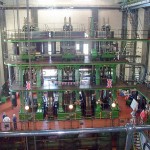
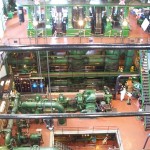
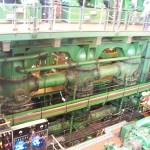
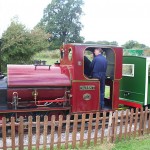
Day: 26 September 2014
Brunel Museum, London
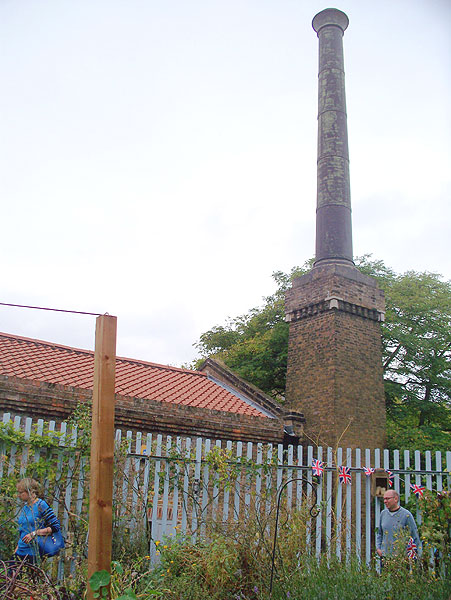 This museum is sited above the Rotherhithe Tunnel built by Brunel in the 19th century. It’s an interesting site, but you should manage your expectations before visiting. The museum (or rather, mini-museum) is housed in an original engine house above the tunnel. The pump engines are no longer there, but you can see a video and display panels about Brunel (father and son) and their project. There is access by guided tour to the original access chamber for the tunnel, a large underground cylindrical space. You have to climb over a small wall, go through a 4ft high opening and descend a scaffold tower. (Definitely no disabled access!) There is a modern concrete floor between you and the train tunnels. There is also a pleasant garden sited above the chamber roof.
This museum is sited above the Rotherhithe Tunnel built by Brunel in the 19th century. It’s an interesting site, but you should manage your expectations before visiting. The museum (or rather, mini-museum) is housed in an original engine house above the tunnel. The pump engines are no longer there, but you can see a video and display panels about Brunel (father and son) and their project. There is access by guided tour to the original access chamber for the tunnel, a large underground cylindrical space. You have to climb over a small wall, go through a 4ft high opening and descend a scaffold tower. (Definitely no disabled access!) There is a modern concrete floor between you and the train tunnels. There is also a pleasant garden sited above the chamber roof.
There is no access to the under-river tunnel from the Museum. Instead, you have three options:
1) Take a London Overground train through the tunnel at any time of your convenience. You may not see much. Most of the Victorian brickwork is now coated with shot-crete.
2) Take a train excursion at a time when the tunnel lights are turned on.
3) Book for one of the rare walks through the tunnel, when the trains have been stopped for maintenance. It will cost you around £18.
By public transport, you can reach the museum by London Overground train to Rotherhithe, or by tube to Bermonsey, then bus. There is a great view of the river a few yards to the North.
